Solar Radiation on a Parabolic Concave Surface
Abstract
:1. Introduction
2. Materials and Methods
2.1. Concave Parabolic Surface Equation
2.2. Self-Shading in a Concave Parabolic Surface-North Facing
2.3. States of Shading
2.3.1. North-Facing Concave Surface
2.3.2. South-Facing Concave Surface
2.3.3. East/West-Facing Concave Surface
3. Solar Radiation Equations: North-Facing Surface
3.1. Direct Beam Radiation on Shaded Surface
3.2. Direct Beam Radiation on Non-Shaded Surface
3.3. Diffuse Radiation
4. Incident Solar Radiation-Numerical Results
5. Discussion
6. Conclusions
- Concave structures may be integrated with PV modules to generate electricity.
- Concave surfaces are self-shading resulting in non-uniformity of the solar radiation.
- Annual incident irradiation is calculated on a parabolic concave surface for and latitudes.
- The calculation shows that the south-oriented surface receives the highest irradiation, next is the east/west surface, and last is the north surface; however, the difference in the irradiation is not very big and is about 15 percent between the south and the north-oriented parabolic surfaces.
Author Contributions
Funding
Institutional Review Board Statement
Informed Consent Statement
Data Availability Statement
Conflicts of Interest
References
- Crutchik, M.; Appelbaum, J. Solar radiation on a catenary collector. Space Power 1992, 11, 215–240. [Google Scholar]
- Colozza, A.; Appelbaum, J.; Crutchik, M. A photovoltaic catenary-tent array for the Martian surface. In Proceedings of the 23rd IEEE Photovoltaic Specialists Conference, Louisville, KY, USA, 10–14 May 1993; p. 3. [Google Scholar]
- Appelbaum, J.; Crutchik, M.; Aronescu, A. Curved photovoltaic collectors-convex surface. Solar Energy 2020, 199, 832–836. [Google Scholar] [CrossRef]
- Cheng, S. Curved Photovoltaic Surface Optimization for BIPV: An Evolutionary Approach Based on Solar Radiation Simulation. Master’s Thesis, Bartlett School of Graduate Studies, University of London, London, UK, 2009. [Google Scholar]
- Rodriguez-Sanchez, D.; Belmore, J.F.; Izquierdo-Barrientos, M.A.; Molina, A.E.; Rosengarten, G.; Almendros-Ibanez, J.A. Solar energy captured by a curved collector designed for architectural integration. Appl. Energy 2014, 116, 66–75. [Google Scholar] [CrossRef]
- Groenewolt, A.; Bakker, J.; Hoffer, J.; Nagy, Z.; Schluter, A. Methods for modelling and analysis of bendable photovoltaic modules on irregularly curved surfaces. Int. J. Energy Environ. Eng. 2016, 7, 261–271. [Google Scholar] [CrossRef] [Green Version]
- Park, S.; Chakraborty, S. Design optimization of photovoltaic arrays on curved surfaces. In Proceedings of the 2018 Design, Automation & Testing in Europe Conference & Exhibition (DATE), Dresden, Germany, 19–23 March 2018; [Google Scholar] [CrossRef]
- Cho, E.; Enriquez-Torres, D.; Martinez, A.; Marciniak, M. Numerical estimation of solar resource for curved panels on Earth and Mars. In Proceedings of the Physics, Simulation, and Photonic Engineering of Photovoltaic Devices VIII (SPIE OPTO), San Francisco, CA, USA, 5–7 February 2019; Volume 10913. [Google Scholar] [CrossRef]
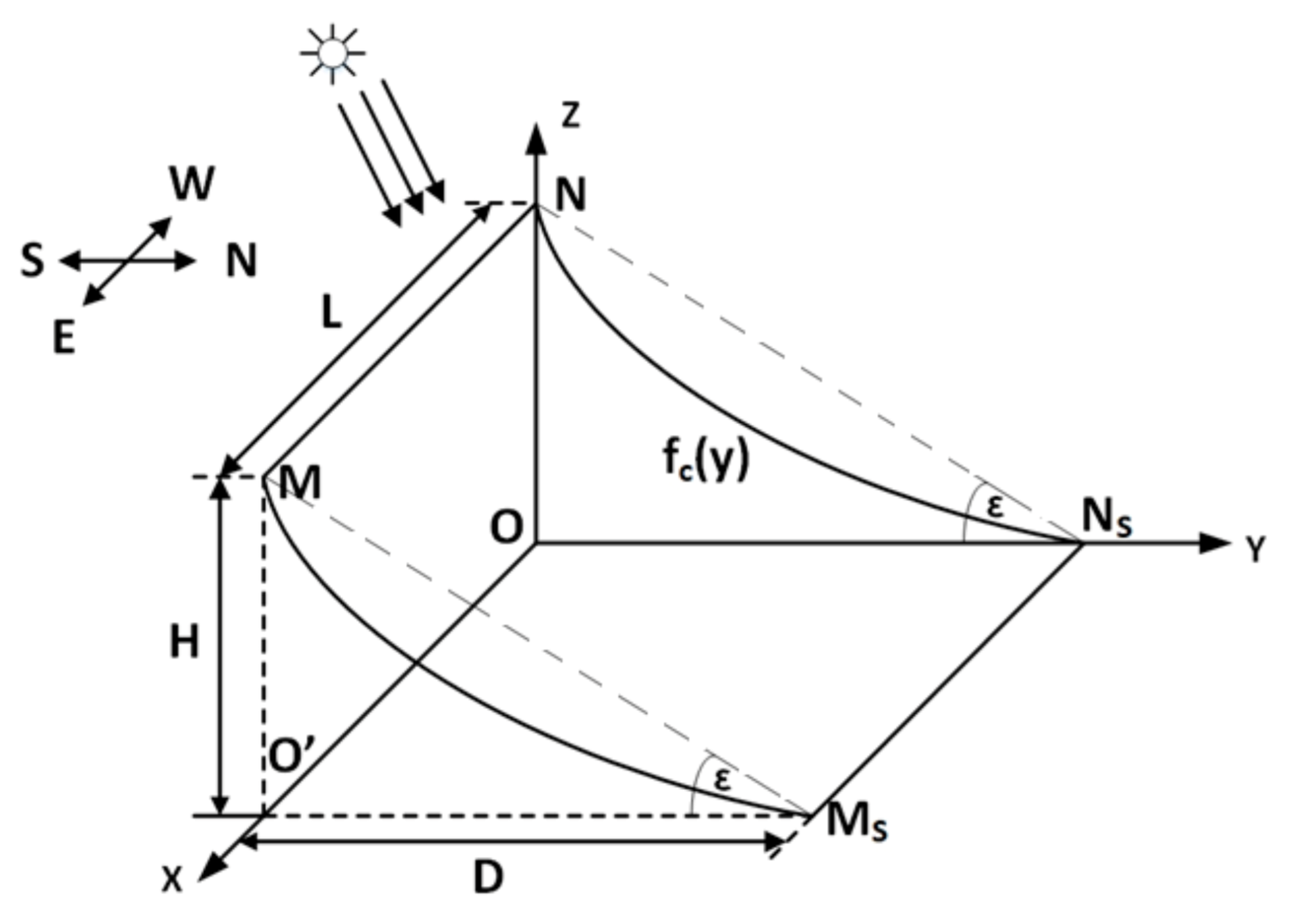

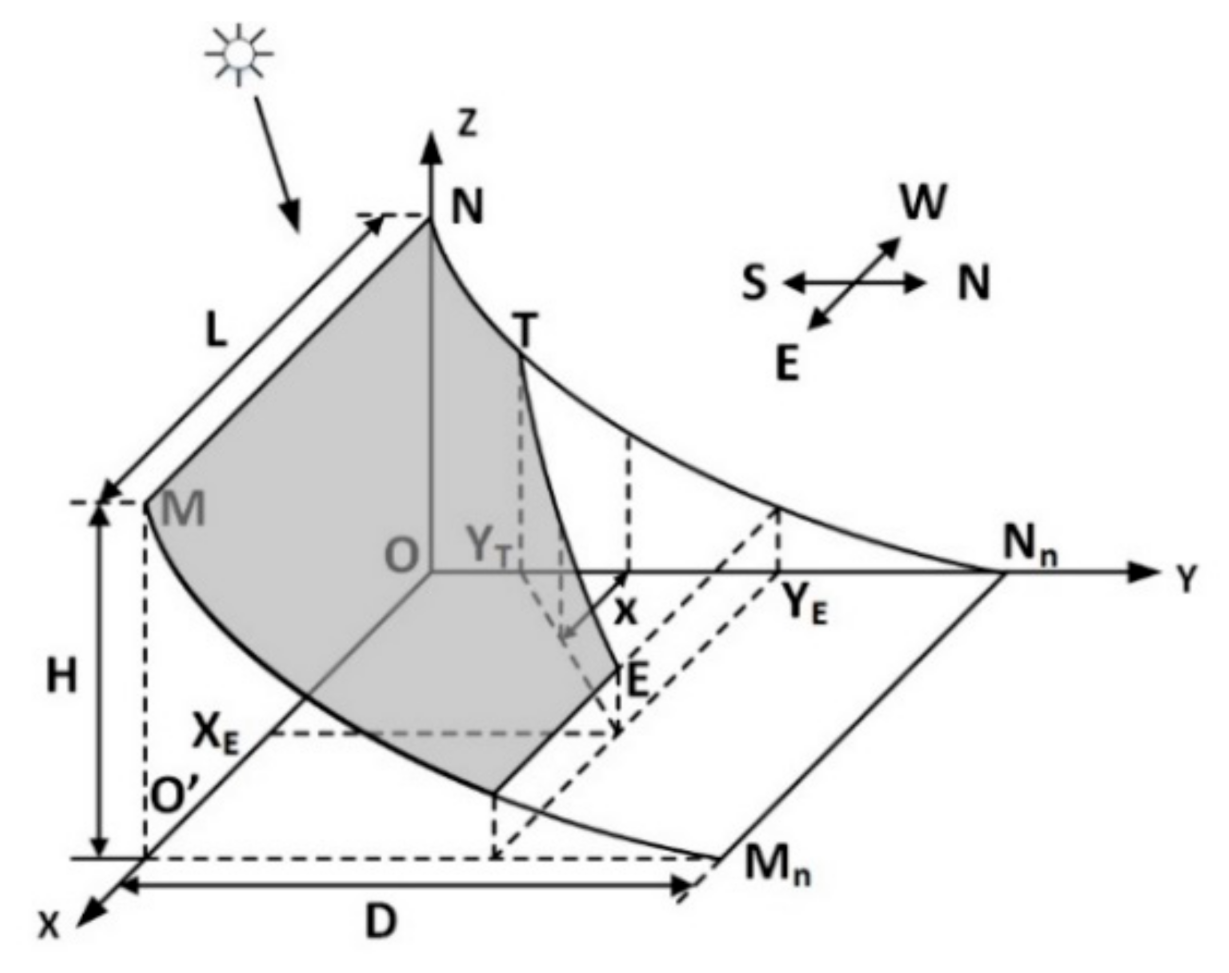
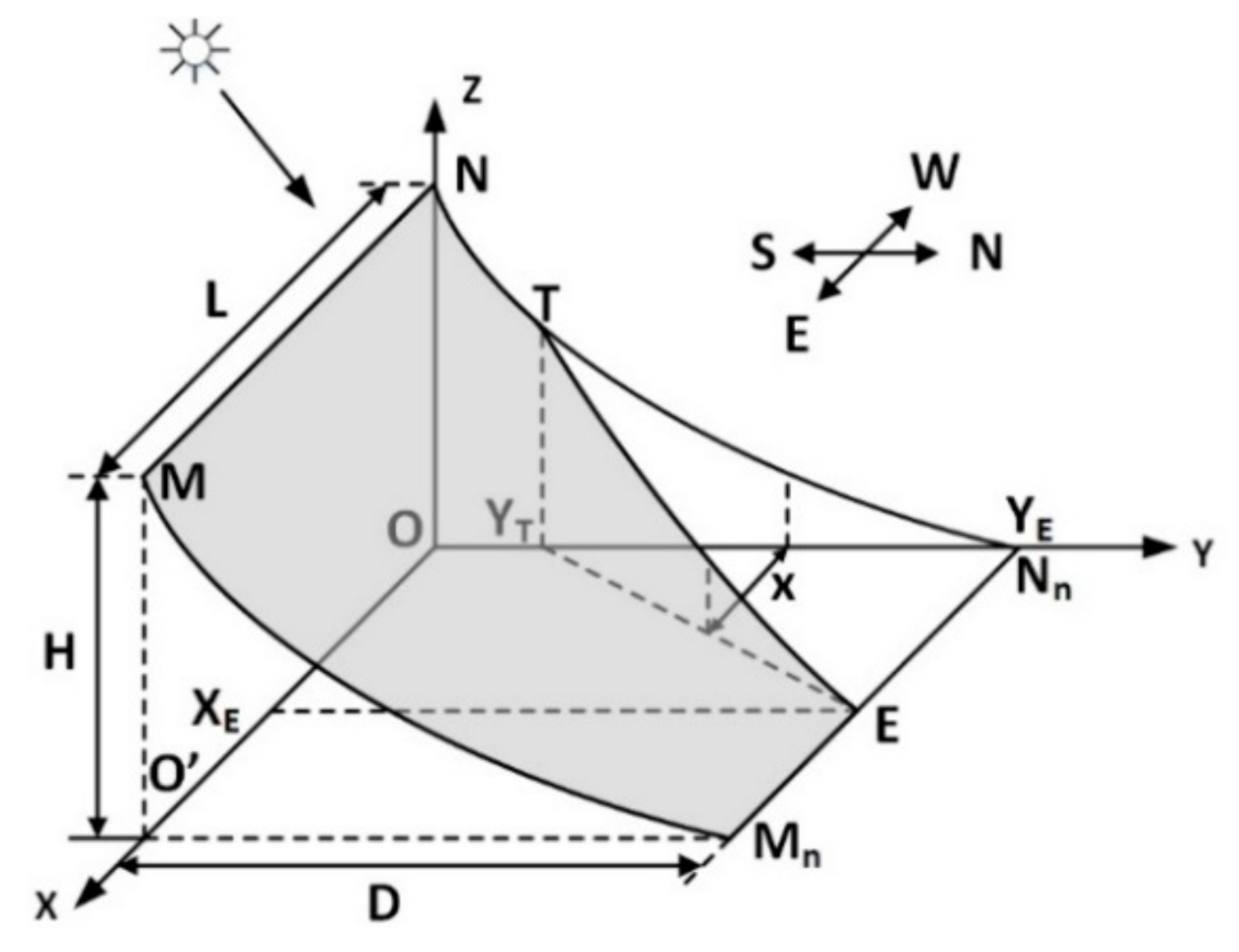
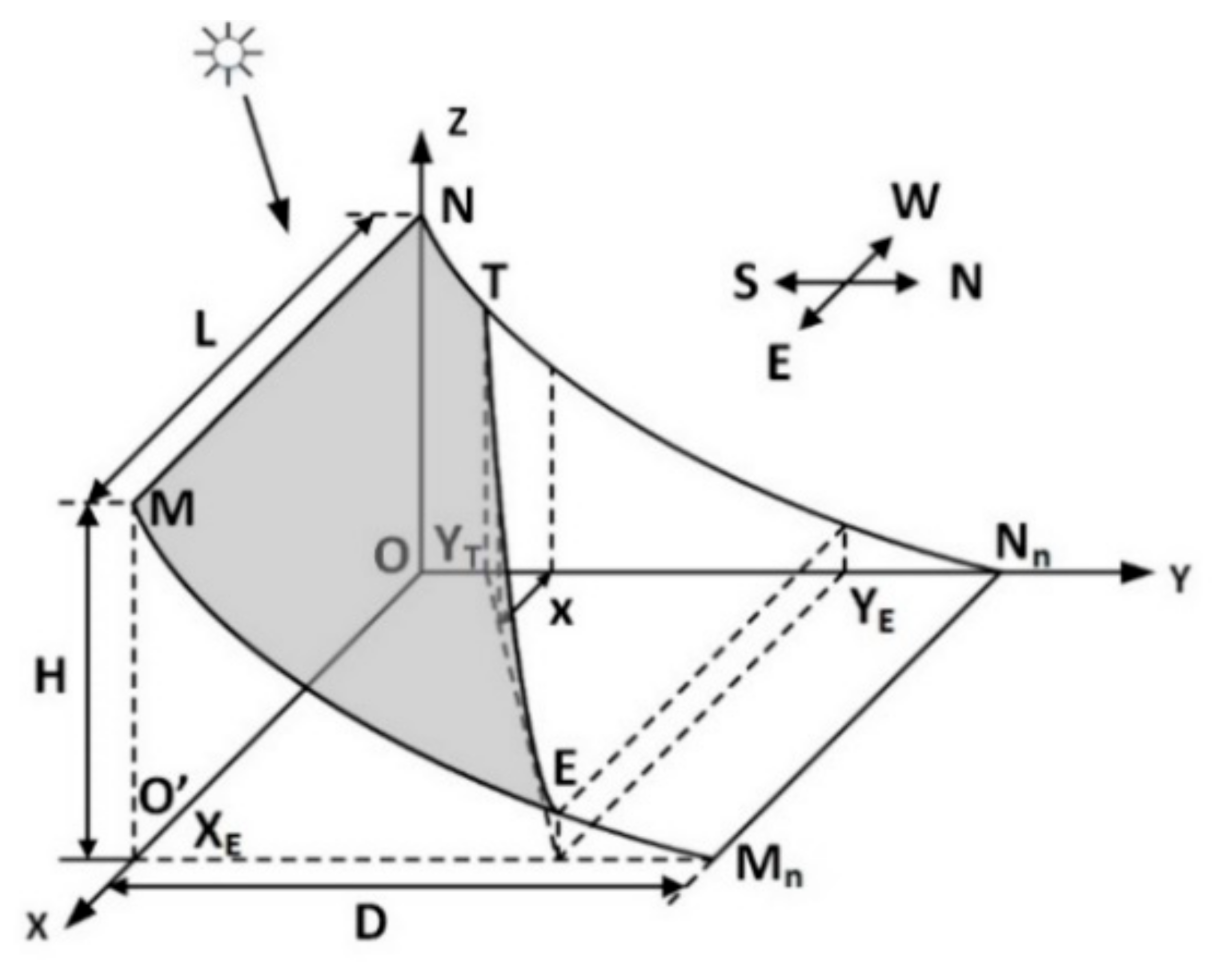
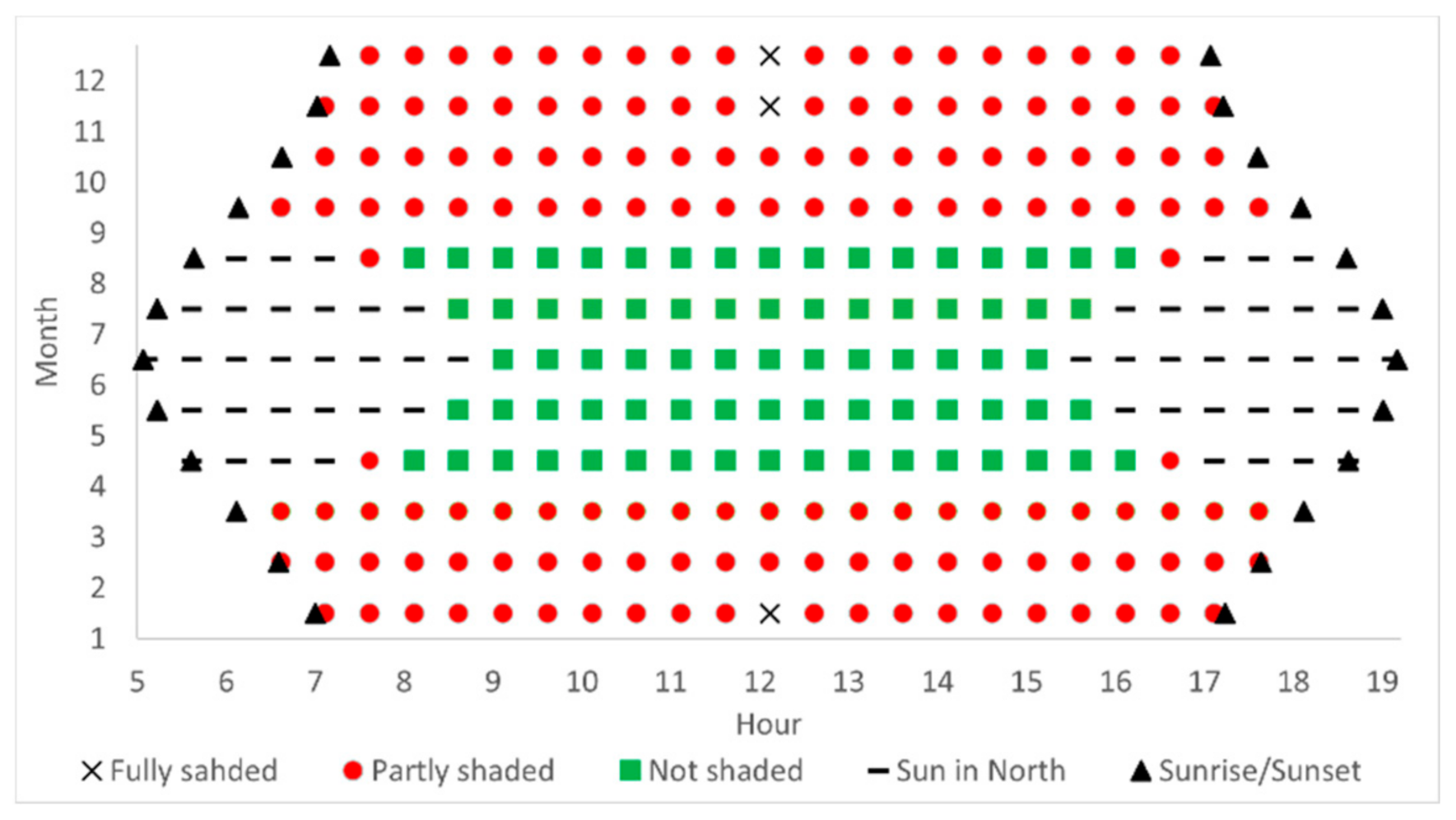
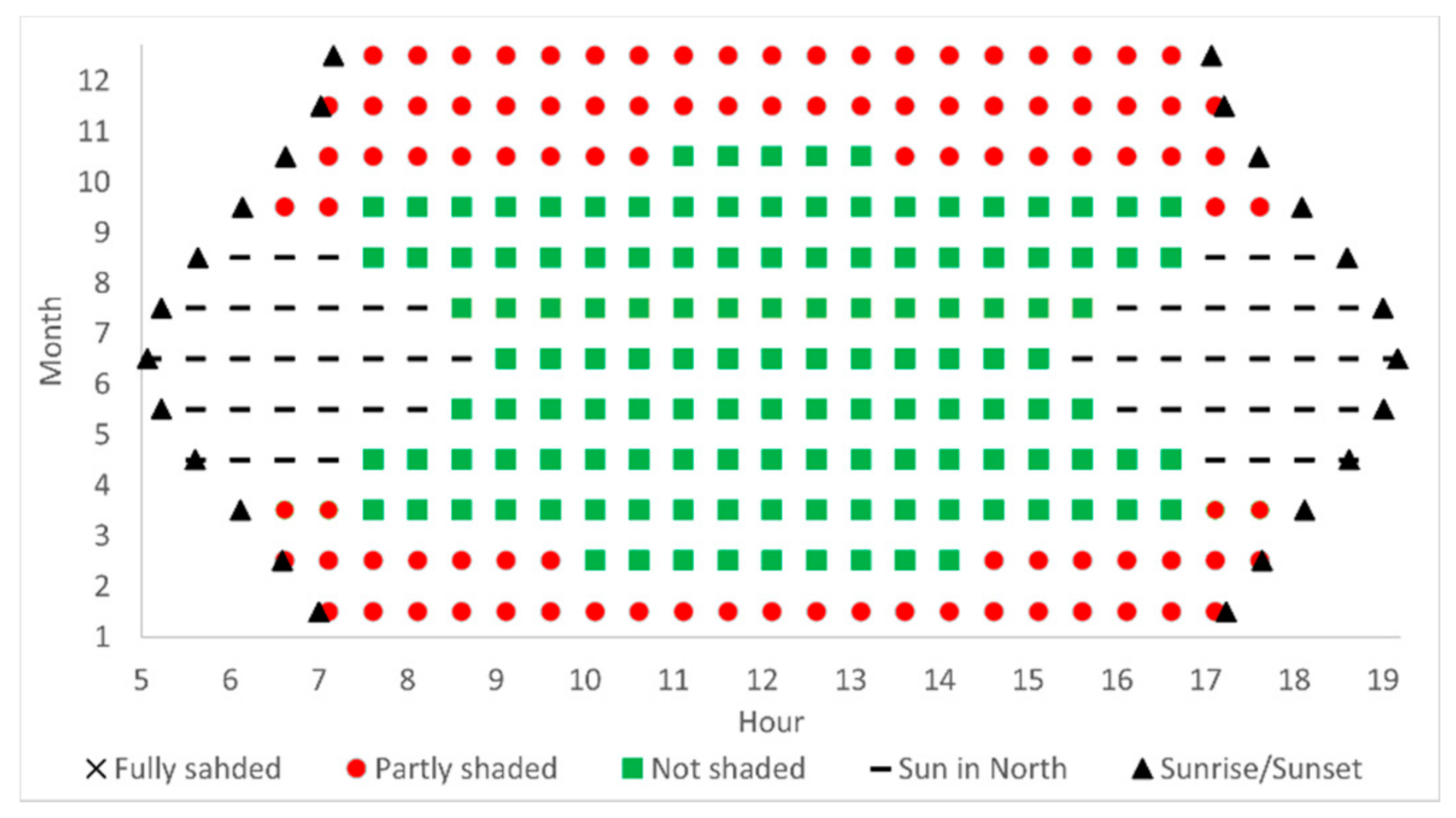
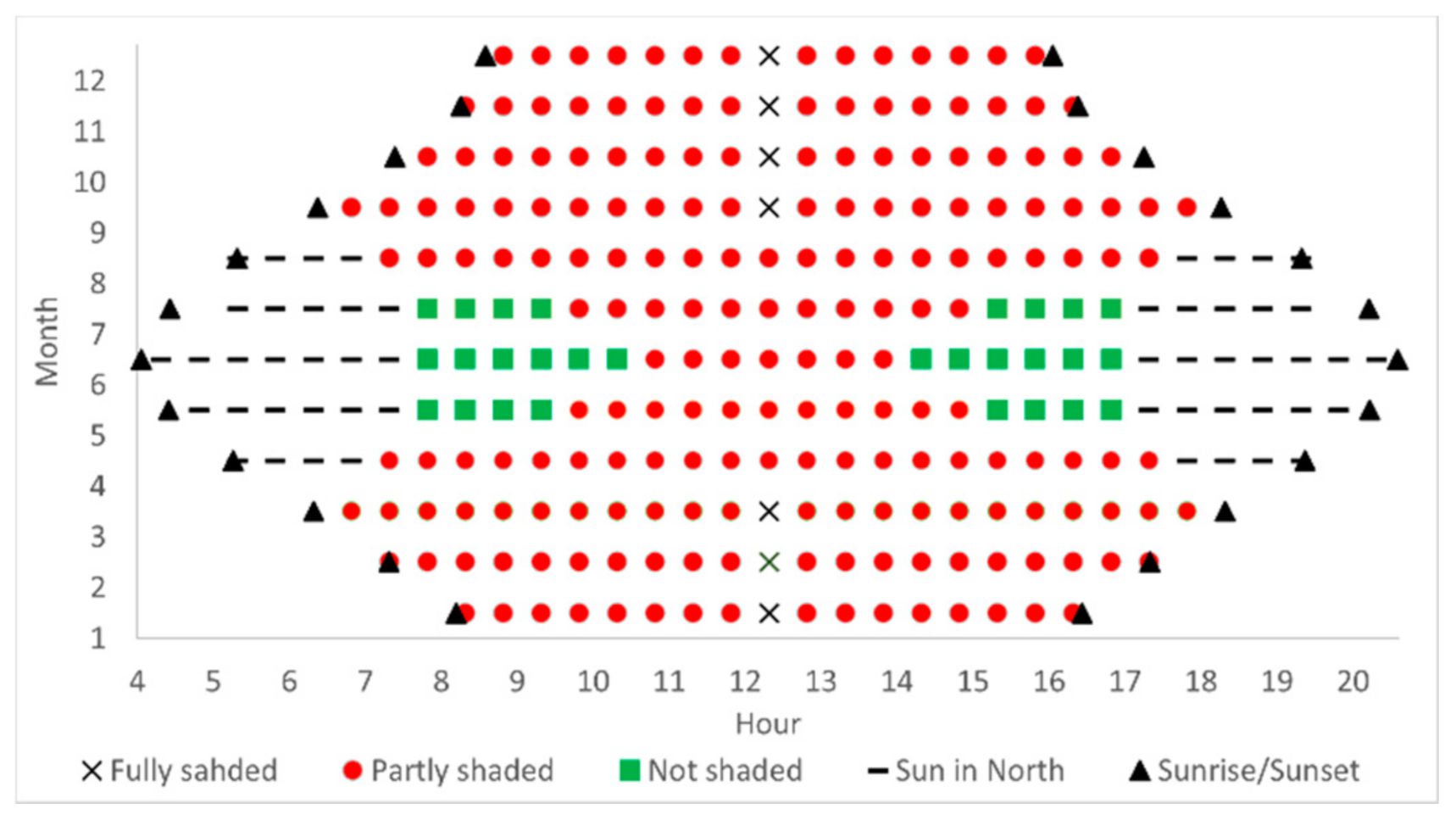
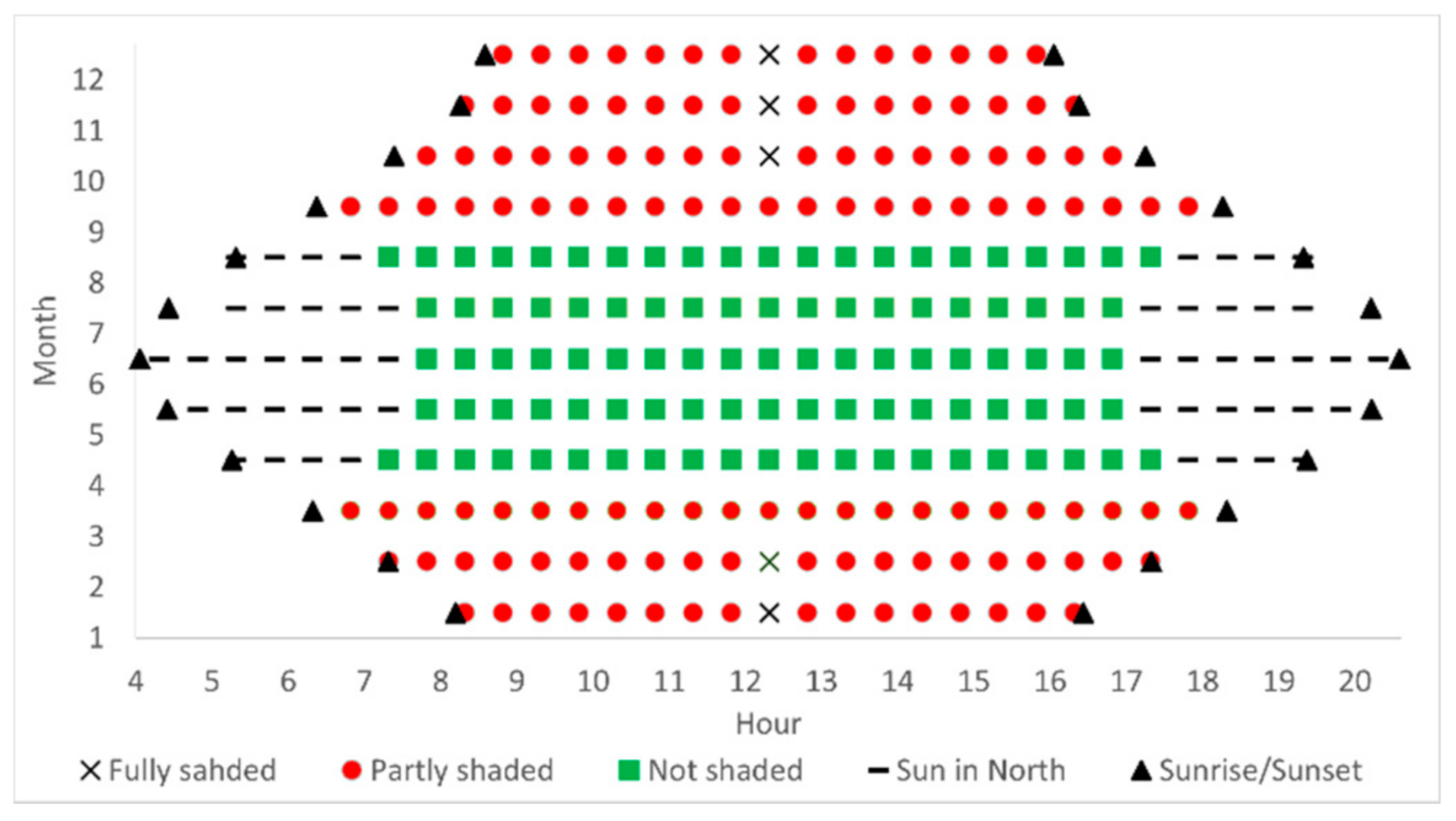
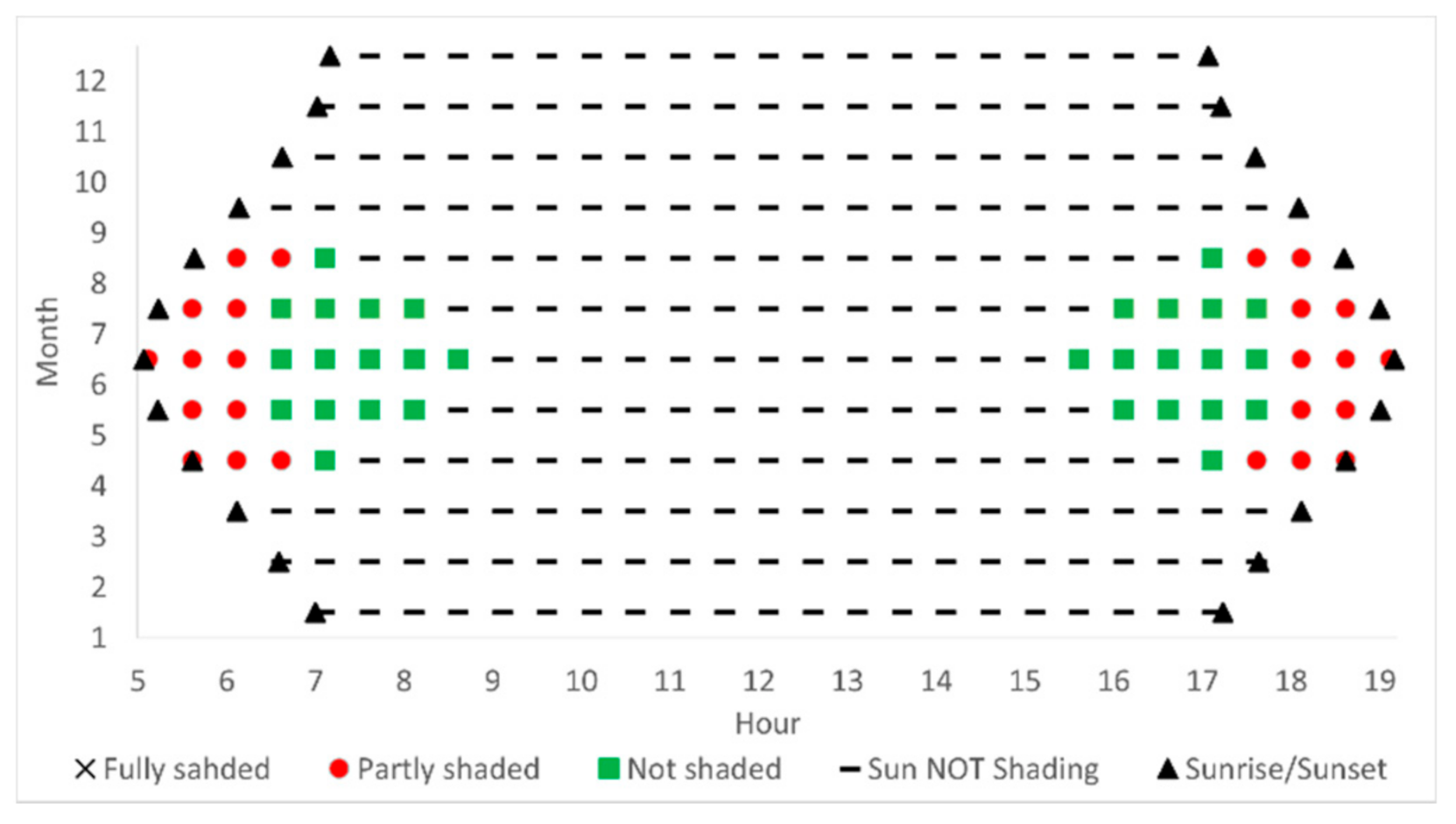
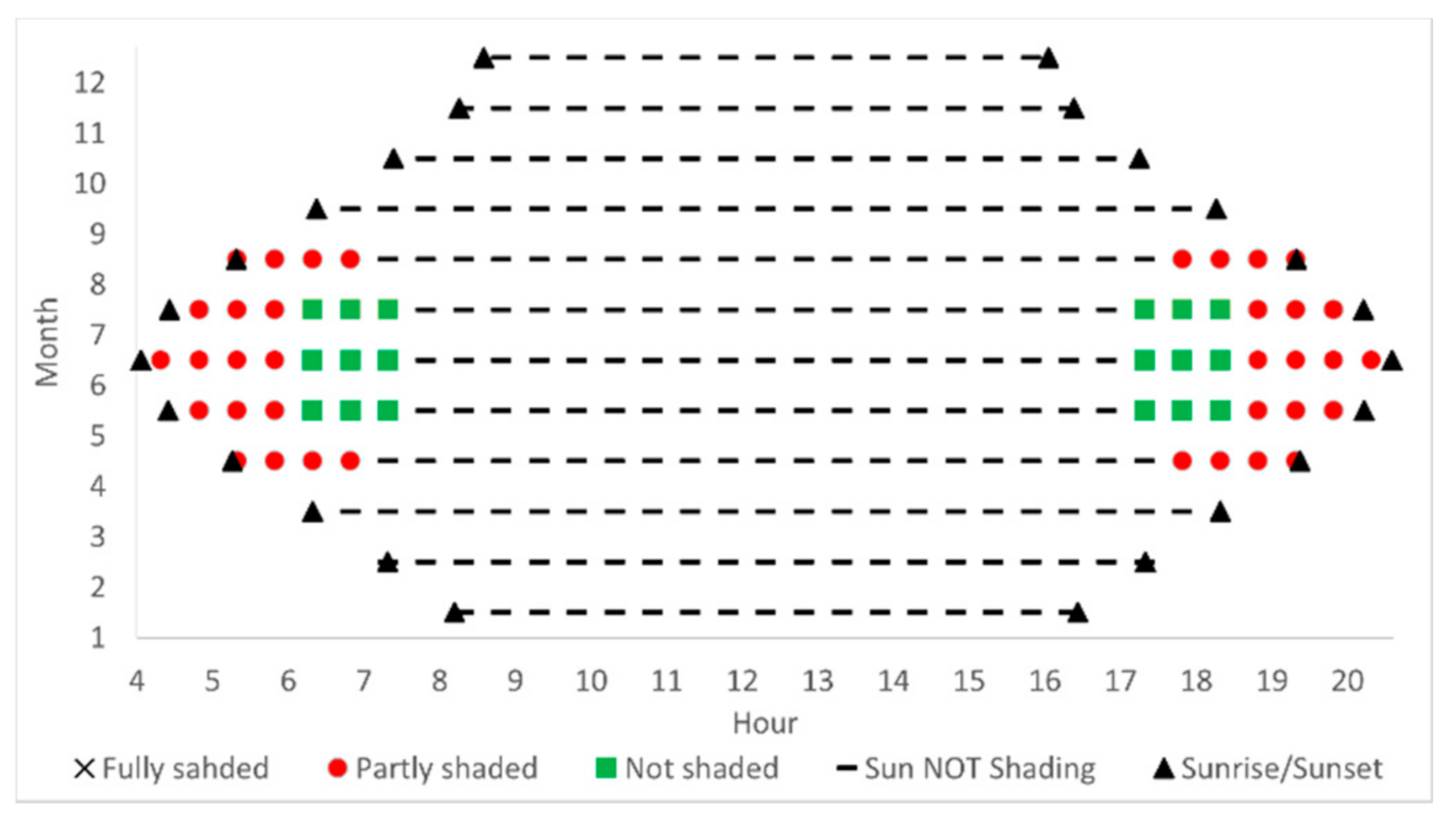
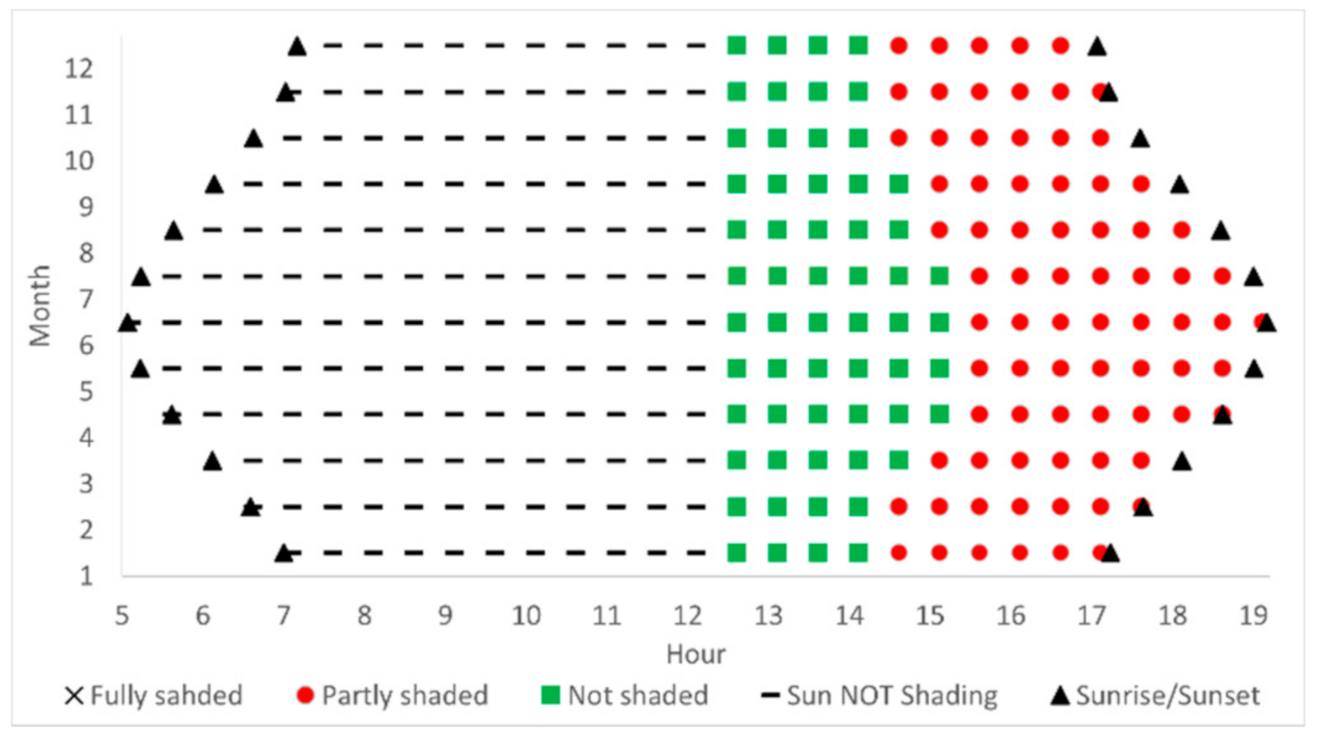

| Sun in North Beam | No Shading Beam | Case (i) Beam | Case (ii) Beam | Case(iii) Beam | Diffuse | Global | |
|---|---|---|---|---|---|---|---|
| 94,476 | 628,571 | 277,196 | 4852 | 30,036 | 473,366 | 1,508,496 | |
| 36,527 | 202,945 | 187,349 | 8262 | 18,901 | 475,861 | 929,846 |
| Sun in North Beam | No Shading Beam | Case (i) Beam | Case (ii) Beam | Case(iii) Beam | Diffuse | Global | |
|---|---|---|---|---|---|---|---|
| 1,216,521 | 66,093 | 0 | 0 | 26,779 | 473,366 | 1,782,758 | |
| 565,671 | 23,430 | 0 | 0 | 39,579 | 475,861 | 1,104,540 |
| Sun in North Beam | No Shading Beam | Case (i) Beam | Case (ii) Beam | Case (iii) Beam | Diffuse | Global | |
|---|---|---|---|---|---|---|---|
| 789,655 | 240,273 | 105,712 | 2703 | 0 | 473,366 | 1,611,709 | |
| 408,874 | 72,101 | 103,179 | 5542 | 4941 | 475,861 | 1,070,497 |
Publisher’s Note: MDPI stays neutral with regard to jurisdictional claims in published maps and institutional affiliations. |
© 2021 by the authors. Licensee MDPI, Basel, Switzerland. This article is an open access article distributed under the terms and conditions of the Creative Commons Attribution (CC BY) license (https://creativecommons.org/licenses/by/4.0/).
Share and Cite
Aronescu, A.; Appelbaum, J. Solar Radiation on a Parabolic Concave Surface. Energies 2021, 14, 2245. https://doi.org/10.3390/en14082245
Aronescu A, Appelbaum J. Solar Radiation on a Parabolic Concave Surface. Energies. 2021; 14(8):2245. https://doi.org/10.3390/en14082245
Chicago/Turabian StyleAronescu, Avi, and Joseph Appelbaum. 2021. "Solar Radiation on a Parabolic Concave Surface" Energies 14, no. 8: 2245. https://doi.org/10.3390/en14082245







